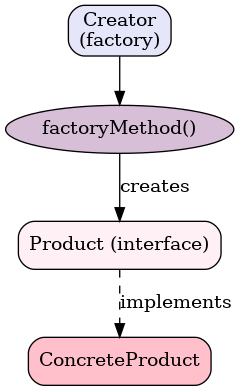Why Go design patterns still matter
When our team adopted Go for a rapidly scaling microservices architecture, it initially felt like the perfect choice: clean syntax, fast builds, and strong concurrency support. But as the system grew, simplicity began working against us. Onboarding slowed, boilerplate multiplied, and inconsistent design decisions crept in. The result? Production bugs and duplicated business logic that became harder to untangle with each new service.
The turning point came when we began introducing a handful of targeted design patterns — not for academic reasons, but to restore predictability and structure across services. Here’s how we approached it, and why it paid off.
1. The scaling strain: When Go’s simplicity started working against us
Each new microservice brought fresh business logic, new engineers, and unfortunately, more duplicated code. Interfaces drifted, onboarding took longer, and debugging across divergent service structures became painful. The breaking point came during a major rollout where multiple services had to coordinate pricing rules across regions. The brittle, branching logic made testing a nightmare.
We needed architectural structure without sacrificing Go’s idiomatic clarity.
2. Why design patterns still matter in Go
In the Go community, design patterns are sometimes dismissed as unnecessary overhead. Simplicity, after all, is a guiding principle of the language. But unstructured simplicity becomes a liability once a codebase reaches a certain scale. Duplicated logic, diverging abstractions, and unpredictable debugging paths slow teams down more than they speed them up.
We didn’t reach for patterns because they were trendy. We adopted them where they addressed recurring pain points:
- Where teammates asked, “Where should this logic live?”
- Where client creation and billing behavior were duplicated across services.
- Where adding a new feature meant untangling tightly coupled code.
The goal wasn’t abstraction for its own sake, but predictability, reuse, and a shared mental model.
3. Three patterns that changed our workflow
Factory Pattern
We introduced factories to standardize client and service initialization across microservices. The benefits included:
- Cleaner onboarding: “Need a database connection? Use this factory.”
- Easier mocking for tests by swapping factory functions (LogRocket: Unit testing in Go).
- A single, testable entry point for dependency setup.
Strategy Pattern
Our pricing engine initially relied on hardcoded rules, which quickly became unmanageable. By introducing a BillingStrategy interface, we could:
- Write country-specific tests in isolation.
- Swap strategies dynamically at runtime for experiments.
- Add new billing rules without touching existing code.
Middleware Pattern
Cross-cutting concerns like logging, authentication, and rate limiting were scattered across handlers. By building a middleware chain, we could compose behavior predictably around any HTTP route:
- Centralized logging in Go
- Reusable rate limiting logic (concepts easily adapted in Go)
- Consistent authentication and tracing hooks
The result was faster implementation of cross-cutting concerns, easier code reviews, and more predictable debugging.
4. The workflow wins we didn’t expect
These patterns delivered immediate benefits, but the systemic gains were even greater:
- Faster onboarding: New engineers understood the structure in days instead of weeks.
- Simplified testing: Dependencies were easily mockable, and business logic was testable in isolation.
- Improved incident response: Modular logic made tracing issues far easier.
5. Patterns are not panaceas
At first, we overreached, wrapping everything in interfaces and injecting factories where simple functions would’ve worked. The lesson was clear: patterns are tools, not rules. We now ask:
- Will this pattern clarify or obscure intent?
- Is this a recurring pain point?
- Will this reduce onboarding time or test friction?
If the answer is “yes,” we reach for a pattern. Otherwise, we keep it simple.
6. Patterns as a scaling lever
In a fast-growing Go microservices environment, a few targeted design patterns gave us modular logic that scaled with the product, smoother developer experiences, and shared structure across teams. For us, patterns became a scaling lever, not just a code trick.
7. Conclusion: Choose structure when simplicity breaks down
Go’s minimalism is one of its greatest strengths, until it becomes the reason your team keeps solving the same problems in different ways. Introducing a handful of well-scoped design patterns helped us restore clarity, consistency, and focus. They didn’t just improve our codebase; they improved how we worked together. And that’s where design patterns stop being overkill and start becoming a strategic advantage.
The post Why Go design patterns still matter appeared first on LogRocket Blog.
This post first appeared on Read More




